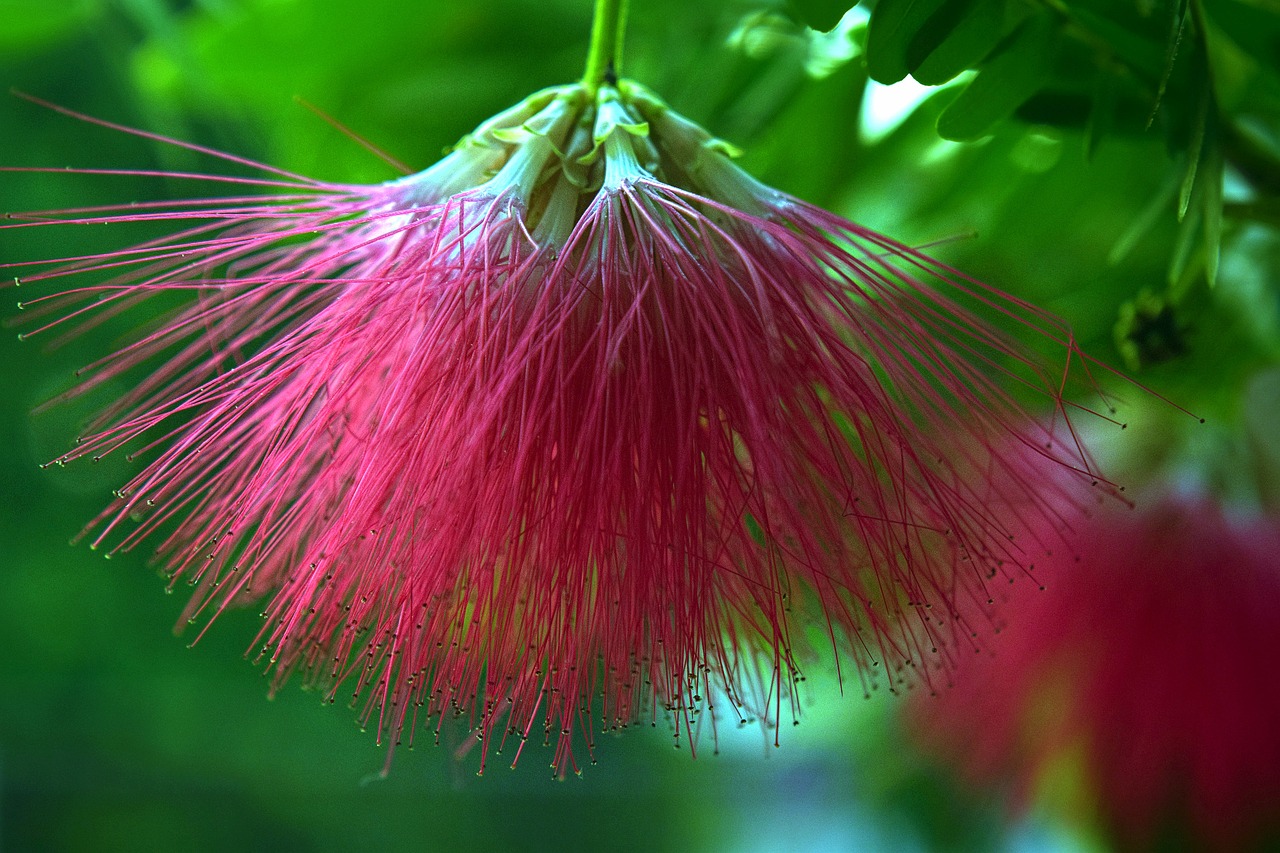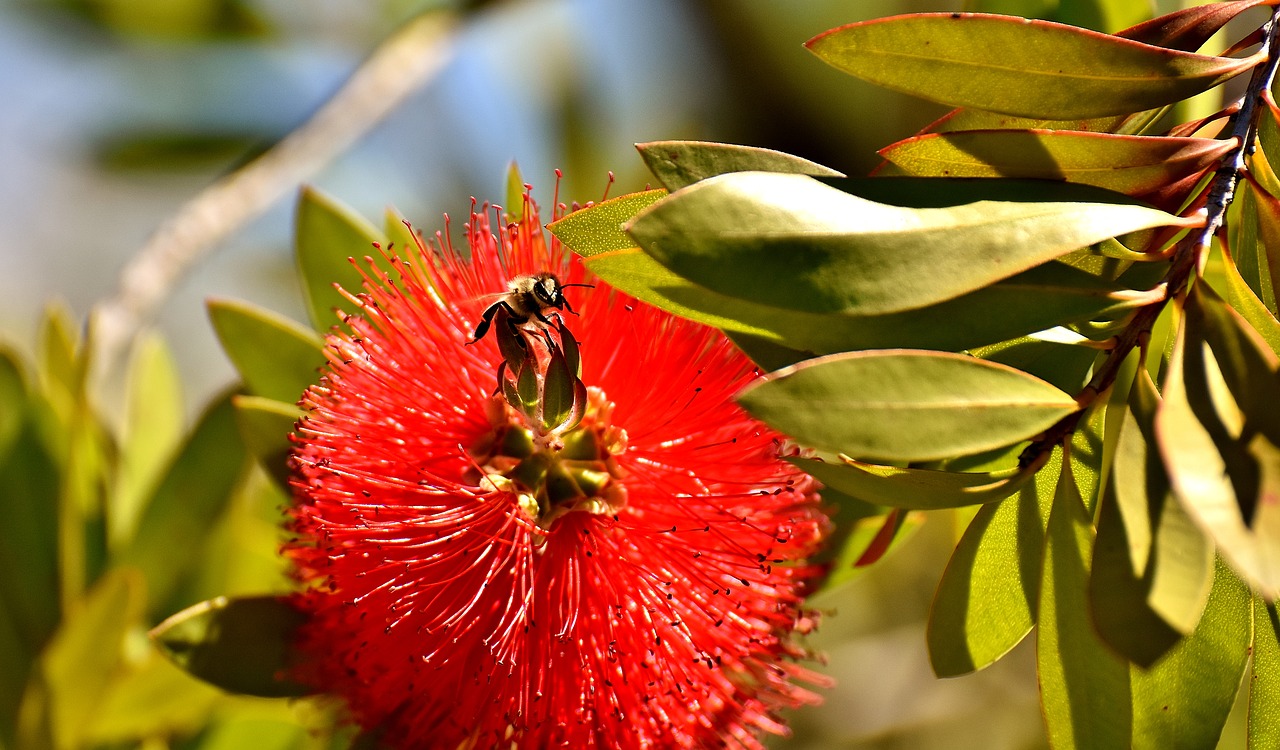In the realm of ornamental trees, the weeping bottlebrush (Callistemon viminalis) stands out as a graceful and unique addition to any garden. With its cascading foliage and vibrant bottlebrush-shaped blooms, this tree adds an elegant touch to landscapes. If you’ve been captivated by the charm of the weeping bottlebrush, let’s explore the secrets to nurturing and flourishing this captivating tree in your own garden.

Choosing the Right Location For Weeping Bottlebrush:
The first step to a thriving weeping bottlebrush is selecting the perfect location. These trees prefer full sunlight, so choose a spot in your garden that receives at least 6 to 8 hours of direct sunlight each day. Ensure the soil is well-draining, as weeping bottlebrushes are sensitive to waterlogged conditions. Planting in an elevated area can help prevent water stagnation and promote optimal growth.
Soil Preparation and Planting:
Prepare the soil by incorporating organic matter, such as well-rotted compost, to improve drainage and fertility. Weeping bottlebrush trees are adaptable to various soil types but thrive in slightly acidic to neutral soil. When planting, dig a hole twice the width of the root ball and at the same depth. Gently place the tree in the hole, backfill with soil, and water thoroughly to settle the soil.
Watering Routine:
Establishing a proper watering routine is crucial during the initial stages of weeping bottlebrush growth. Water deeply immediately after planting and continue to provide consistent moisture until the tree is well-established. Once established, weeping bottlebrushes are relatively drought-tolerant, but regular watering during dry spells will promote optimal health and blooming.

Mulching for Moisture Retention:
Mulching around the base of your weeping bottlebrush tree serves multiple purposes. It helps retain soil moisture, regulates soil temperature, and suppresses weed growth. Apply a layer of organic mulch, such as bark chips or straw, around the base of the tree, keeping it a few inches away from the trunk. Replenish the mulch as needed, especially after heavy rainfall or as it decomposes over time.
Pruning for Form and Health:
Weeping bottlebrush trees have a natural tendency to develop a weeping, cascading form. However, strategic pruning can enhance their shape and promote overall tree health. Prune dead or damaged branches regularly and shape the tree by selectively trimming longer branches to maintain an attractive silhouette. Pruning is best done after the tree has finished flowering, typically in late spring or early summer.
Fertilizing Tips:
Weeping bottlebrush trees generally do not require heavy fertilization. However, applying a balanced, slow-release fertilizer in spring can boost growth and flowering. Follow the manufacturer’s recommendations for application rates, and be sure to water the tree well after fertilizing. Avoid excessive use of high-nitrogen fertilizers, as this can lead to lush foliage at the expense of blooms.
Pest and Disease Management:
While weeping bottlebrushes are relatively resistant to pests and diseases, occasional issues may arise. Keep an eye out for pests such as scale insects or aphids, and treat promptly with insecticidal soap or neem oil if necessary. Ensure good air circulation around the tree to prevent fungal diseases. Regular inspections and early intervention will help maintain a healthy and thriving weeping bottlebrush.

Seasonal Considerations:
Weeping bottlebrush trees are hardy in warm climates but may experience cold damage in frost-prone regions. If you’re in an area with occasional frost, consider providing protection during winter months. Applying a layer of mulch around the base and covering the tree with frost cloth on especially cold nights can help shield it from freezing temperatures.
Conclusion:
Cultivating a weeping bottlebrush in your garden is a rewarding endeavor that brings a touch of elegance and charm to your landscape. By following these guidelines on location, soil preparation, watering, pruning, and overall care, you’ll be well on your way to flourishing weeping bottlebrush trees. Embrace the unique beauty of this cascading marvel and enjoy the vibrant blooms that will grace your garden for years to come. Happy gardening!

